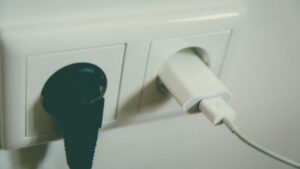Topic
Ensuring Motorcycle Safety: Tips for Riders on the Road

Table of Contents
1. Importance of Proper Riding Gear
2. Regular Motorcycle Inspection
3. Practicing Defensive Riding
4. Riding in Various Weather Conditions
5. Increasing Awareness of Road Conditions
6. Continuing Education and Skills Training
7. Avoiding Common Mistakes
8. Key Takeaways for Every Motorcycle Rider
Importance of Proper Riding Gear
Having the correct attire can be a lifesaver. Helmets, jackets, gloves, and boots are not just for style; they offer essential protection from serious injuries. Most motorcyclists in Daytona Beach invest in durable jackets and pants made of leather or other abrasion-resistant materials. Helmets are incredibly crucial. Motorcycle helmets are 37% effective in preventing fatal injuries to riders. A high-quality helmet can distinguish between life and death during an accident. Ensuring you ride safely can be further supported by consulting a motorcycle accident attorney in Daytona, who can provide additional resources and guidance on safety measures.
Gloves are another vital component of your riding gear. They provide grip and protection for your hands, reducing the risk of road rash or broken bones in an accident. Boots should cover your ankles and have a sturdy sole for better footpeg control and protection. Remember, investing in proper gear is an investment in your safety and well-being.
Regular Motorcycle Inspection
Regularly inspecting your motorcycle is crucial for safe riding. It includes a visual check and routine maintenance per the manufacturer’s guidelines. Begin by checking the tire pressure and tread depth. Deflated tires can impact how a vehicle is controlled and raise the chance of a sudden tire burst. Worn tires, on the other hand, reduce traction, especially in wet conditions. Also, check for foreign objects embedded in the tires that could cause a puncture. A well-maintained motorcycle significantly reduces the risk of accidents caused by mechanical failure. Then, check the brake pads for signs of damage. Brake pads are designed to wear out gradually, and replacing them before they deteriorate too much is essential to continue having efficient stopping power. Check all lights and indicators to ensure they are working correctly. Faulty lights can make you less visible to other road users, especially at night or in poor weather conditions.
Regular oil changes and ensuring all fluid levels are within the recommended range will keep your engine running smoothly. Maintaining your motorcycle in peak condition allows you to focus on the ride rather than being distracted by mechanical issues. Develop a maintenance list or timetable to assist with organization and guarantee everything is noticed.
Practicing Defensive Riding
Defensive riding is about being proactive and prepared for potential hazards on the road. Always assume that other drivers may not see you. Position yourself in the lane where you are most visible to other drivers, avoiding blind spots. Use your signals well in advance to communicate your intentions to other road users.
Participating in a defensive driving course is an effective way to enhance your defensive riding skills. These courses focus on techniques that help you anticipate and respond to potential hazards. Defensive riding courses can significantly reduce the likelihood of accidents by improving rider awareness and reaction times.
Additionally, always stay alert and focused on the road. Remain concentrated on your bike journey and avoid diversions like texting or fixing your equipment. Inevitably, elements are beyond your control, but how you respond to them can make all the difference. Stay calm and collected, making measured decisions rather than abrupt actions.
Riding in Various Weather Conditions
Weather can dramatically affect your riding experience and safety. Wet or icy roads significantly reduce traction, making it easier to lose control. Fog, rain, or snow can decrease visibility, making it harder for you and other drivers to see. Always make sure to check the weather forecast before leaving. If adverse conditions are expected, consider postponing your ride. If you’re already on the road when the weather takes a turn for the worse, reduce your speed and increase the following distance. These adjustments give you more time to react in case of sudden changes.
Rain gear is essential for wet conditions. Waterproof jackets, pants, and gloves keep you dry and warm, maintaining your ability to control the motorcycle. Anti-fog visors or treatments can help maintain good visibility in the rain or fog. It might be best to avoid riding altogether on terrible weather days, prioritizing your safety over the need to travel.
Increasing Awareness of Road Conditions
Being aware of road conditions is crucial for a safe ride. Look for hazards such as potholes, oil spills, loose gravel, and uneven surfaces. Potholes can cause severe damage to your motorcycle’s tires or suspension, while oil spills and gravel reduce traction, increasing the risk of skidding. When navigating through unfamiliar routes, take additional caution. Adjust your speed and position on the road to navigate these safely. Awareness can prevent many common accidents. Regularly updating your knowledge of local areas, construction sites, and seasonal changes in road conditions can also prove invaluable. This proactive approach can save you from potentially dangerous encounters.
Continuing Education and Skills Training
Constantly improving your riding skills can significantly improve your safety. Advanced riding courses and workshops offer invaluable training. These programs teach techniques for handling emergencies, improving cornering skills, and understanding motorcycle dynamics. Your local Department of Motor Vehicles may provide such classes, and private institutions often have practical riding sessions focusing on advanced skills training. Participating in these courses improves your riding ability and confidence on the road. As you learn new techniques and refresh your knowledge base, you become more adept at handling various riding situations. Continuing education also provides an opportunity to stay updated on the latest safety practices and technological advancements in motorcycle safety.
Avoiding Common Mistakes
Many motorcycle accidents result from avoidable mistakes. Significant contributors are speeding, not using signals, and riding under the influence. Speeding reduces your reaction time and increases stopping distance, making it more likely to lose control. Always obey traffic laws and adhere to speed limits. Failure to use signals can lead to misunderstandings with other road users, increasing the risk of collisions. Please make it a habit to signal well in advance. Riding under the influence is extremely dangerous as it impairs your judgment and reaction time. Stay sober when you’re riding. Mistakes can be minimized by consciously following traffic rules and understanding your motorcycle’s capabilities and limitations.
Moreover, fatigue can also impair your ability to ride safely. Ensure you are well-rested before hitting the road. Taking breaks during long rides to stretch and hydrate can help keep you alert and focused. Avoiding these common mistakes makes the road safer for everyone.
Critical Takeaways for Every Motorcycle Rider
Ensuring safety on the road requires diligence and the right mindset. Always wear protective gear, inspect your motorcycle regularly, and stay informed about road and weather conditions. Practice defensive riding and continue learning to make every journey a safe one. Safety measures and education are the key to enjoying your ride while minimizing risks. Remember, investing time and resources to improve your riding skills and maintain your motorcycle is an investment in your safety and well-being.
Topic
Simple Appearance Upgrades That Lift Your Mood

The way we present ourselves plays a significant role in how we feel day to day. Our appearance reflects our personality and impacts our confidence, self-esteem, and mood. When we feel good about how we look, it can influence our posture, social interactions, and even our motivation levels. Boosting your mood through appearance doesn’t have to involve drastic changes or costly makeovers. Simple upgrades, easily incorporated into your daily routine or wardrobe, can make a profound difference. From refreshing your hairstyle to reorganizing your closet, small improvements can foster positivity and a greater sense of self-worth.

Update Your Hairstyle for a Fresh Start
One of the quickest and most effective ways to feel renewed is by changing your hairstyle. Whether it’s a trim, a new color, or a completely different cut, a hairstyle shift can dramatically alter how you view yourself in the mirror. Hair has emotional power. It represents change, reinvention, and control. Visiting a trusted stylist can be a self-care ritual that boosts mental well-being. Even simpler changes like trying a new part, adding texture, or styling with a fresh accessory can lift your look and your spirits. When your reflection feels more aligned with how you want to feel, your confidence naturally improves.
Enhance Your Skincare Routine
Taking care of your skin is one of the simplest ways to boost your confidence and lift your mood. A consistent skincare routine tailored to your needs can improve your complexion’s health and glow, making you feel refreshed and radiant every day. Beyond cleansers and moisturizers, some choose to enhance their natural beauty with subtle cosmetic options like lip fillers. When done thoughtfully, experts from https://drscottallison.com.au/lip-filler/ explain, lip fillers can add gentle volume and definition, creating a youthful and balanced look that complements your appearance. This small enhancement often provides a positive emotional boost, helping you feel more confident and comfortable in your skin.
Reorganize and Refresh Your Wardrobe
Our clothes are more than just fabric; they’re an extension of our identity. Sorting through your wardrobe to eliminate items that no longer fit, feel comfortable, or match your style can be a surprisingly freeing experience. By curating a closet of pieces you love and feel great in, you create a daily opportunity to start the morning on a positive note. Consider introducing a few new staples, such as a flattering jacket, a pair of well-fitted jeans, or a vibrant scarf, to inject life into your outfits. Even color choice affects mood; wearing bright or soothing hues can uplift your emotional state and communicate energy or calmness to those around you.
Accessorize with Intention
Accessories can transform an otherwise plain outfit and provide a sense of uniqueness and polish. Choosing items that reflect your personality, such as statement earrings, a favorite watch, or a meaningful necklace, can offer a boost of joy every time you put them on. Accessories allow you to express creativity without changing your entire wardrobe. Even something as simple as a new handbag, belt, or pair of sunglasses can spark a sense of excitement. Intentional accessorizing helps you feel more put-together and can serve as a small yet impactful mood elevator, particularly when you receive compliments or notice your sparkle in a mirror.
Upgrade Your Posture and Body Language
While not an external item like clothing or makeup, your posture and body language significantly influence your appearance and how you feel. Standing tall, walking with purpose, and maintaining an open, relaxed posture can project confidence and positively impact your mood. Simple posture improvements, such as pulling back your shoulders or keeping your chin up, can create the psychological feedback loop of feeling stronger and more in control. Practicing yoga, stretching, or using a posture-correcting aid can support long-term improvement in how you carry yourself. This improves your presence and reinforces an internal feeling of well-being and empowerment.
Introduce a Signature Scent
Scent is a powerful trigger for emotions and memories. Wearing a fragrance that you love can become a mood-lifting ritual, setting the tone for your day. Whether it’s a light floral perfume, a fresh citrus body spray, or a calming essential oil blend, a pleasing scent can provide comfort and confidence. Choosing a signature scent adds a layer of intentionality to your appearance, giving you something special that’s uniquely yours. It’s a subtle yet sensory upgrade that can make you feel more refined, energized, or relaxed, depending on the aroma you choose. Simply put, smelling good can make you feel good, and others will notice it, too.

Feeling good about how you look doesn’t require an extreme makeover or a high-end wardrobe. Simple, thoughtful appearance upgrades can yield big returns in how you feel emotionally and mentally. Whether it’s through grooming habits, wardrobe updates, posture improvements, or scent selection, taking control of your presentation is an empowering way to nurture your inner well-being. By incorporating a few small changes, you can elevate your appearance and your outlook on life.
Topic
How Emergency Standby Power Keeps Critical Systems Running During Outages

Power outages can strike without warning, disrupting homes, businesses, and critical infrastructure. Whether caused by storms, equipment failure, grid overload, or maintenance issues, these outages can lead to substantial financial losses, safety hazards, and operational setbacks. For facilities that rely heavily on continuous electrical power, such as hospitals, data centers, manufacturing plants, and emergency response centers, losing electricity for even a few seconds can have severe consequences.
Emergency standby power systems provide a lifeline in these situations. Designed to automatically supply electricity when the primary power source fails, these systems ensure that important equipment and services remain operational. They prevent business disruption and protect lives, data, and assets in environments where downtime is simply not an option.

The Role of Standby Generators in Power Continuity
At the heart of most emergency standby power systems is a standby generator. These generators are designed to automatically start when an outage is detected and provide power until utility service is restored. Unlike portable generators that require manual activation and limited capacity, standby generators are permanently installed and integrated into a building’s electrical system.
They are typically fueled by diesel, natural gas, or propane, and are capable of powering entire facilities or designated circuits depending on the system design. When properly sized and maintained, standby generators can run for hours, or even days, without interruption.
What makes them truly valuable is their ability to engage automatically and seamlessly. The moment a disruption is sensed, the system reacts within seconds to restore power, ensuring minimal downtime and no manual intervention during a crisis.
Why Transfer Switches Are Important
A critical component of any standby power system is the transfer switch. This device detects a failure in the utility power and shifts the electrical load to the generator. Once utility power is restored, the switch transfers the load back, allowing the generator to shut down safely. Facilities looking to streamline this process often search for automatic transfer switches for sale to upgrade their emergency systems with faster and more reliable switching capabilities. These switches are crucial in maintaining uninterrupted service in high-stakes environments like healthcare facilities or emergency response centers.
Automatic transfer switches work by constantly monitoring voltage from the utility line. When a drop or loss is detected, the switch initiates generator startup and transitions power to the standby source. Once normal service resumes, the switch completes the transfer back and signals the generator to cool down and shut off. This sequence happens without human input, eliminating delays and reducing risk.
Applications That Depend on Standby Power
While most buildings benefit from some level of backup power, certain sectors absolutely require it. Hospitals and healthcare clinics use standby systems to keep life-saving equipment functioning during grid failures. Critical functions such as ventilators, monitors, electronic records, and surgical instruments cannot afford even brief interruptions.
Data centers depend on uninterrupted power to prevent data corruption, service downtime, and network instability. Many modern business operations, from e-commerce to cloud storage, rely on real-time data availability and uptime guarantees. For these organizations, power continuity is not a luxury, it’s a contractual and operational requirement.
Manufacturing plants use standby power to keep machinery running and protect sensitive production lines from abrupt halts that can cause quality issues or equipment damage. Cold storage facilities use it to preserve inventory, while communication centers use it to maintain connections during emergencies.
System Design and Customization
The effectiveness of a standby power solution depends heavily on how well it’s designed for the specific needs of the facility. A thorough assessment is necessary to determine which systems and circuits require backup, how much power is needed, and what kind of generator and transfer switch will best serve the environment.
Some facilities require whole-building coverage, while others may only need to power critical systems like emergency lighting, refrigeration, or IT infrastructure. The size and fuel source of the generator must align with usage patterns and runtime expectations. The location of the generator must meet ventilation, accessibility, and noise regulations.
Customization ensures efficiency and cost-effectiveness. Over-sizing a system leads to unnecessary expenses, while under-sizing can result in power failures during high-demand periods. Professional installation and consultation are key to ensuring that the standby system performs reliably when it’s needed most.
Maintenance and Testing
Installing an emergency standby power system is only the first step. Ongoing maintenance and periodic testing are key to ensure the system will operate correctly in the event of an outage. Generators should be inspected regularly for fuel levels, oil quality, battery charge, and coolant condition. Transfer switches should be tested to confirm proper functionality and response times.
Most industry standards recommend monthly testing, including full-load tests under simulated outage conditions. This verifies that the generator will start and sustain the load and exercises the system to keep components in working condition.
Failing to maintain the system increases the risk of failure during a real emergency. Scheduled inspections, service contracts, and record-keeping contribute to the longevity and dependability of the equipment.
Compliance and Regulatory Considerations
Standby power systems must comply with national and local codes when used in regulated industries. Healthcare facilities are subject to guidelines from organizations such as the National Fire Protection Association (NFPA), which mandates testing intervals, load requirements, and installation protocols.
Building codes may dictate where and how equipment can be installed, particularly in terms of noise levels, emissions, and proximity to flammable materials. Non-compliance can lead to fines, delays in permitting, or insurance complications.
Businesses should work with knowledgeable installers and consultants who understand these regulations and can design systems that meet both operational and legal standards.
Future Trends in Standby Power
Technology in the standby power space continues to evolve. Hybrid systems that integrate battery storage with traditional generators are gaining traction for their ability to bridge the gap between power loss and generator startup. Smart monitoring systems now allow for real-time diagnostics, remote testing, and predictive maintenance.
Sustainability is becoming a greater focus. Advances in clean energy generators, such as those powered by hydrogen or renewable biodiesel, offer environmentally responsible alternatives without compromising reliability.
As demand for uninterrupted service grows, so does the innovation around how we provide and manage backup power. These advancements promise greater efficiency, faster response, and reduced environmental impact, all while keeping critical systems online during power disruptions.

Emergency standby power is more than a safety net, it’s an operational necessity for many industries. By providing immediate, reliable power during outages, these systems prevent costly downtime, protect crucial functions, and ensure business continuity when it matters most. Through careful planning, proper equipment selection, and regular maintenance, businesses can safeguard their infrastructure and people against the risks of power failure. Whether it’s for healthcare, data protection, manufacturing, or public safety, a well-designed standby system is one of the smartest investments an organization can make.
Topic
Dealing with a Persistent Pest Issue? Here’s What You Need to Do

There is only one thing worse than discovering a pest infestation in your home, and that’s discovering that the pest Pest Issue infestation is still there after you have already taken pest control measures.
By their nature, pests are resilient. If they found a good breeding ground in your home, they will come back, especially if the pest control method you used to get rid of them wasn’t thorough enough.
That doesn’t mean you have to despair. If you have a recurring pest infestation, here are a few important steps you can take to make your property critter-free once and for all.
Hire a Professional Exterminator

If you’ve been trying to manage your pest issues on your own, it’s time to hire a professional exterminator. For persistent pest infestations, DIY solutions or products that you can buy at the local hardware store usually aren’t strong enough to make a difference.
Look for exterminators that are proven to provide lasting solutions to pest control issues. The team at North Fulton Pest Solutions, for instance, has been serving the Atlanta area for more than 50 years, which means they have plenty of experience with all kinds of infestations. Look for positive reviews or ask your neighbors for recommendations.
For persistent pest infestations, you may need multiple visits from an exterminator. Talk with the professionals you hire and make sure that they are transparent about their plans and how much it will cost.
Get Rid of Their Habitats

When pests keep coming back to a home, usually it’s because they found something there that they like. Go through your home and property to find potential habitats and sources of food that may be attracting pests. A professional exterminator can also help you analyze your property to find potential pest breeding grounds.
Throw out any clutter such as old newspapers, junk, or garbage bags, especially in out-of-the-way spaces like crawlspaces and attics. Clutter provides pests with a nesting ground. It can even be a source of food.
Standing water is another attraction for pests, especially mosquitoes and other bugs. Get rid of pools or places where puddles form when it rains. Go over your plumbing to find any hidden leaks that may be attracting pests.
Make Sure They Can’t Come In
There’s no point in making your home unwelcoming to pests if you’re unwittingly inviting them in. Go over your home and identify places where pests can get inside, such as cracks, open windows, or crawlspaces.
Seal off any potential entrance points for pests. That way, once you redo your pest control treatment, they won’t be able to come back.
Finding Pest Control Solutions That Last
Persistent pest infestations are the nightmare of every homeowner, but you can manage them with the right help. Make sure that your home is inhospitable to pests by getting rid of their habitats, food sources, and points of entry. That way, you can prevent future infestations.
To get rid of persistent infestations, you need help from a professional exterminator. They can provide treatments that remove long-lasting pest colonies and advise you on ways to prevent future infestations. It may take multiple visits, but a good exterminator will help you get rid of pests once and for all.

 Cartoon1 year ago
Cartoon1 year agoUnlocking the Potential of Nekopoi.care: A Comprehensive Guide

 Game1 year ago
Game1 year agoExploring Aopickleballthietke.com: Your Ultimate Pickleball Destination

 BUSINESS1 year ago
BUSINESS1 year agoWhat Companies Are In The Consumer Services Field

 BUSINESS1 year ago
BUSINESS1 year agoUnraveling the Mystery of 405 Howard Street San Francisco charge on Credit Card

 HOME IMPROVEMENT1 year ago
HOME IMPROVEMENT1 year agoVtrahe vs. Other Platforms: Which One Reigns Supreme?

 TECHNOLOGY1 year ago
TECHNOLOGY1 year agoThe Guide to Using Anon Vault for Secure Data Storage

 ENTERTAINMENT11 months ago
ENTERTAINMENT11 months agoUnderstanding Bunkr Album: A Comprehensive Guide

 ENTERTAINMENT1 year ago
ENTERTAINMENT1 year agoThe Epic Return: Revenge of the Iron-Blooded Sword Hound
















